Full-fledged air defense systems on a submarine
It has long been known that the worst enemy of a submarine is an airplane. Or an PLO helicopter, focused on finding and destroying a submarine or pointing ships at it capable of coping with this task.
Moreover, the submarine cannot feel safe, even while under water. A malicious thing - an PLO helicopter with a suspended sonar station - is capable of finding a boat even at depth. And then everything goes according to plan # 1. Find and destroy.
However, a ship against a submarine, even a specialized one, is 50/50, because a submarine in its element is capable of puzzling any, absolutely any military ship. A torpedo launched from a safe depth and a safe distance is a reality of today. Moreover, the torpedo will be smart, which will aim at everything.
With flying equipment, this will not work. This applies to all modern submarines, no matter what country they are produced in. Against aviation the submarine is helpless.
Of course, submerged submarine detection is a very difficult thing. And, the speed and quality of detection directly depend on many components, such as the technical equipment of the search engines, the weather situation and, most importantly, the experience and level of training of the PLO ship's crew.
On average, the range of confident detection of submarines by surface ships is about 50 km. Modern torpedoes travel the same distance. Parity? Yes. The situation may be such that the boat detects and attacks the ships before they can do it. Although it can easily happen and vice versa.
But when ships work closely with PLO aircraft and helicopters, the situation can change dramatically.
Aviation has a very important advantage: a higher speed of movement to the area where the submarine is likely to be located, plus, unlike ships, the boat is not able to detect the aircraft (and it will soon be possible to add specialized UAVs here) in any way, except for a periscope.
Of course, a modern periscope is somewhat different from what was on boats 100 years ago, but nonetheless. Some of our media outlets talked about modern Russian periscopes capable of looking into the sky and detecting aircraft there.
It is clear that there are a lot of pitfalls here. Periscope depth is already guaranteed detection of a boat from the air.
But it’s not even about detection. Visual observation through a periscope is a thing of the past. Not serious somehow. But the "teeth" that the submarine seems to have do not look very serious either. Russian boats are "armed" with Igla MANPADS.
The complex is 40 years old this year, as it is in service. Yes, Igla is still capable of catching up and shooting down an aircraft, but ...
Imagine a situation: a visual periscope of a submarine, sailors with MANPADS jump out onto the deck, trying to target something flying ...
On the aircraft, the boat has long been in the sight of the radar, along the beam of which homing missiles start ...
Plus, today any aircraft or helicopter is equipped with packets of fired heat traps. If such traps are fired not one at a time, but in volleys, "Needle", alas, goes blind.
Does any of the readers dream of being in such a situation? On the deck of a submarine with MANPADS against a modern aircraft or helicopter? I would not want to. There is little chance of getting out of this situation alive. The submarine hull is too open ...
Today experts have appeared who are considering the appearance of full-fledged air defense systems on submarines. In their opinion, today PLO planes and helicopters work too comfortably, without the slightest opposition from submarines.
This is partly true. Boats are really defenseless against aviation, and it would be nice to do something about it. A boat capable of attacking a search helicopter or an aircraft - this can greatly change the existing alignment on the sea-ocean.
But what will it look like? How can you imagine an underwater air defense system?
In general, judging by the publications, they are thinking about this in many countries. USA, Germany, France, Norway. Surely - China, but there they are extremely cautious about what they are working on for the future.
The fact that in the countries producing military equipment they say about the problem indicates that work is underway. And they are being conducted not only in terms of theoretical developments, but also at the level of prototypes.
We, that is, the USSR, where it all began, and Russia is no exception. Work on submarine anti-aircraft weapons has been going on since the mid-70s of the last century.
Even then, the designers really wanted to arm submarines against aviation. True, the path followed by the engineers was doubtful.
What is most important when aiming a rocket? That's right, radar. This is a more advanced device than the human eye, which must detect an air target and manually aim a MANPADS missile. On a radar signal, missiles fly more accurately, and the radar detects targets at significantly greater distances than the human eye.
But placing a full-fledged radar station on a submarine is an interesting idea. I like it for its completeness, but it has several significant drawbacks: first, a conventional radar will not work under water. And because ordinary waves do not pass under water, and because the radar in salt water will work for a very short time.
It turns out that even if the radar is placed in a protruding periscope enclosure (this structure is also called a wheelhouse), then it will be possible to use it only in a floating state.
And the designers dreamed of creating weapons systems that could hit flying targets from a distance of up to 20 km. Moreover, not only from the surface position (when it is often too late and the boat is discovered), but also from the periscope depth and even from the depth of the missile weapons.
In 1982, a preliminary design of an underwater-based anti-aircraft guided missile based on the 9M330 missile from the ship's Kinzhal air defense system was completed. This work was carried out at the Fakel Design Bureau as part of the Aerolit design and development project.
The project was not successful, the authors were unable to solve the problem of creating a stabilization system on the sea surface with waves up to 5 points. But the main thing that Soviet designers could not create was an autonomous target detection and guidance system, and even in the dimensions of a 533-mm torpedo.
In 1991, the Laser project was launched, and in 1994 - Laser-2. These were interesting developments based on the container of a towed sonar station.
It was assumed that the 9M96 missiles, developed for this project, would be placed in a towed GAK container behind the boat. The meaning of the project was as follows: the hydroacoustic station caught the operation of similar devices used by aviation and issued a command to ascend the container. The container floated to the surface of the water, its upper part was opened and the missile defense system was launched vertically.
The most interesting thing should have happened after the launch of the rocket. She had to gain height, turn 90 degrees, lie down in a horizontal plane and start rotating around its axis. At this time, the slit antenna in the nose of the rocket was supposed to scan space in order to detect targets and aim at them.
In case of a zero result, the rocket would simply fall into the water.
The project could not be finalized. We were unable to resolve the issue of turning the rocket into the horizon and pointing the rocket during rotation. In addition, the ascent of the container took quite a long time, and the lack of stabilization made it difficult to launch missiles in waves.
In the 2014s, work resumed. In 2382313, a project also appeared in the form of an outboard module with short-range missiles. Patent developments RU XNUMX for "an autonomous universal submarine self-defense complex" became the basis.
In fact, a continuation of the "Lasers" theme, the system was planned as an autonomously operating system for the destruction of air targets. The development included systems for detection, activation, surfacing, deployment, stabilization, taking into account the roll angles during waves, search and localization of targets.
This complex was supposed to act autonomously and work on targets completely independently.
Within the framework of the project, it was also planned to use long-range missiles of the 9M96 and 9M96D types, which were planned to be launched from vertical launchers for cruise missiles.
The project was not completed until the end due to the lack of a radar of the proper size. Without a radar capable of detecting targets when the boat is at periscope depth or deeper, using only the periscopes for detection, the complex was of no value.
However, it is possible to return to the project using the capabilities not of floating containers with radars and missiles, but of reconnaissance unmanned vehicles capable of becoming the "eyes" of submarines in the air. Communication with the UAV can be carried out through towed antenna buoys, fortunately, the communication technology through buoys has already been worked out.
But the most interesting project today is considered to be the IDAS system (Interactive Defense and Attack System for Submarines), the authorship of a joint German-Norwegian development.
IDAS is a German development based on the IRIS-T air-to-air missile, a multifunctional missile, from which the Germans and Norwegians are jointly trying to make a subsurface-to-air missile.
So far, this is the only sane system in the world that can provide submarine air defense against certain types of flying targets. "It can" - because after the first demonstration in 2012, the system continues to be improved to this day.
The IDAS missile has a length of 2,6 m, a diameter of 1,8 m and a firing range of at least 15 km. It is believed that the missile will be able to confidently destroy low-speed targets like PLO helicopters, which are a very vulnerable target during search work.
The helicopter must move at a very low speed, pulling a GAS weighing several hundred kilograms on a cable in the water (the Russian VGS-3 weighs 376 kg for example) - very inconvenient for a helicopter and convenient for a rocket.
The IDAS subsonic missile is optimized to work precisely for such targets - low-altitude and low-speed, but very dangerous for the boat.
Four missiles are stored in a transport and launch container, which, if necessary, is loaded into a 533-mm torpedo tube. The rocket starts from the torpedo tube, comes to the surface, takes off into the air, unfolds the wings and stabilizers and turns on the main engine.
It is clear that the operation of the power plant in two different environments is the main secret of the rocket. But the Germans solved it and now they are bringing the rocket to perfection. Tests are underway, IDAS shows stable results during operation, the range of confident firing ranges from 15 to 20 km.
And the Germans were able to solve another problem. This is management. To control the missile, a fiber-optic cable is used, through which the missile is controlled from the moment it leaves the water until the target is captured. Then IDAS handles on its own.
Initially, it was planned to use a conventional infrared homing head in the design of the rocket, but in the end it was decided that control via a fiber-optic channel would provide greater accuracy and reliability of firing.
In the United States, they also do not sit idly by. They followed the path of the Germans and are also trying to adapt the ancient AIM-9 Sidewinder missile for an underwater launch. Yes, on the one hand, "Sidewinder" is a rather middle-aged development, 50s, in service in the United States since 1956. On the other hand, the rocket can be called an ingenious development, since, being modified, the Sidewinder is still being produced and is currently in service with many countries in the world, moreover, clearly not poor ones, such as the Emirates and Turkey. Plus it is licensed in Germany, Japan, France, Britain, Sweden and even China. In China, of course, they did without licenses.
In November 2005, the Americans conducted a test launch from the Tomahawk launcher from a submerged submarine. The test was successful. At the same time, the Sea Serpent complex is being developed, which is also being developed based on the Sidewinder.
The missile in the complex will be housed in a sealed pop-up capsule launched from a 533-mm torpedo tube. Since the capsule will be sealed, it is planned to launch it from depths of up to 50 meters. Target designation is planned to be carried out from standard radio reconnaissance and hydroacoustic surveillance systems.
The Americans have been working with the underwater version of the Sidewinder for more than 30 years and are in no hurry to go anywhere, clearly working for the result. The press reported that the complex could enter service no earlier than 2025. The deadline is pretty close, so we'll see.
So, we can say that our potential "friends" from NATO have two potential complexes capable of working against airborne detection systems.
It would be very useful if there was a domestic development capable of protecting our submarines.
It is even doubly useful: firstly, real protection will reduce the possibility of detecting our multipurpose nuclear submarines and strategic submarines on the one hand, on the other, it will definitely increase the efficiency of our ships. Secondly, the appearance on our submarines of full-fledged anti-aircraft missile systems can make the enemy think about the tactics of using anti-submarine aviation in principle.
Whoever is the first to be able to finish work on their submarine-based air defense systems will receive an advantage. There is no doubt that this weapon will be in demand.
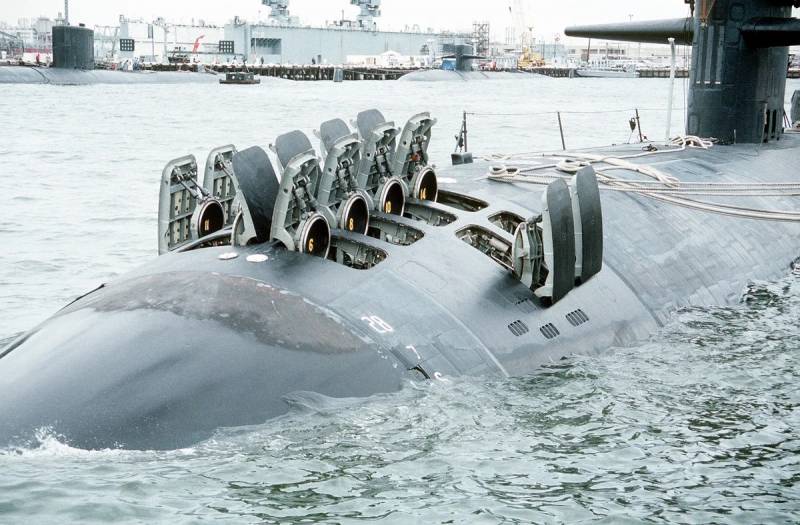
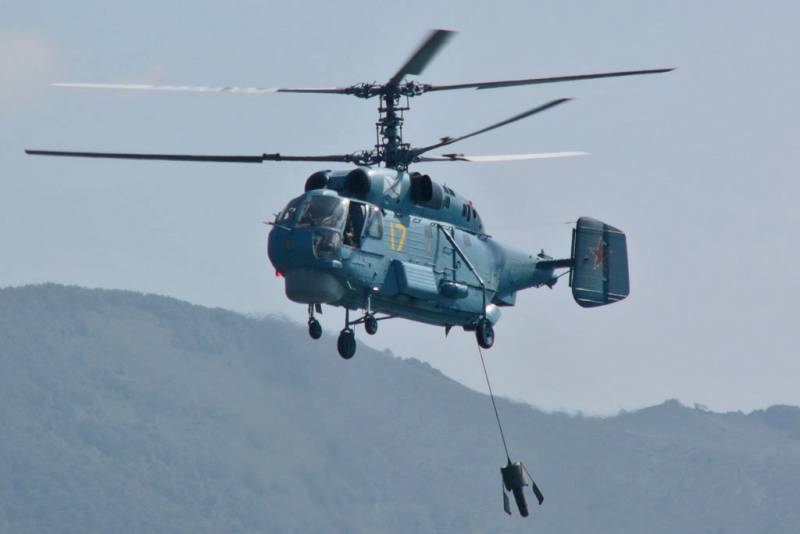
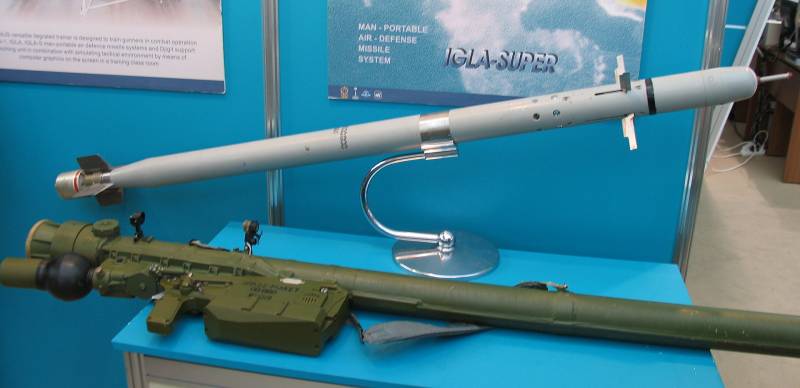
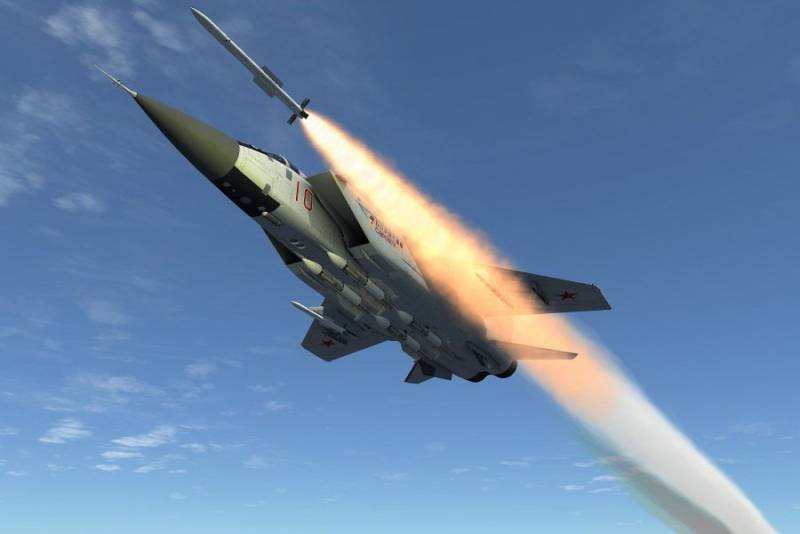
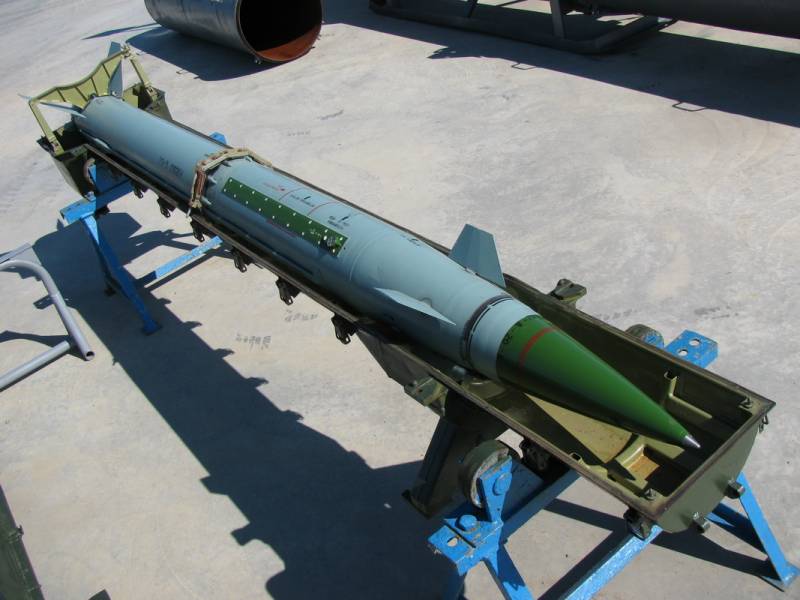
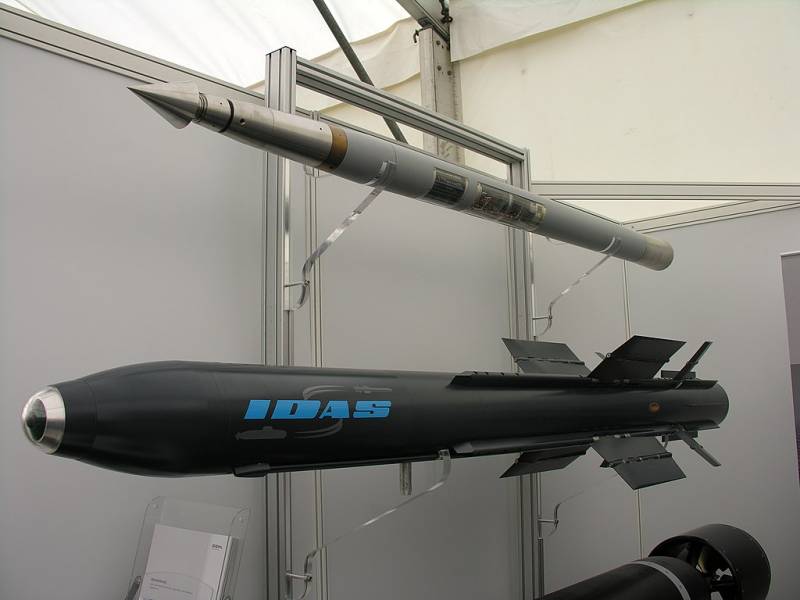
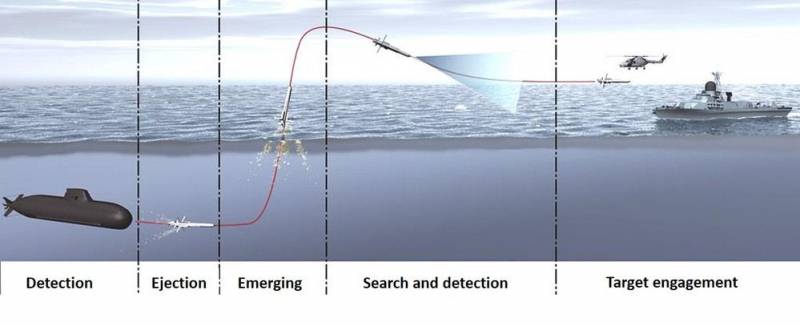
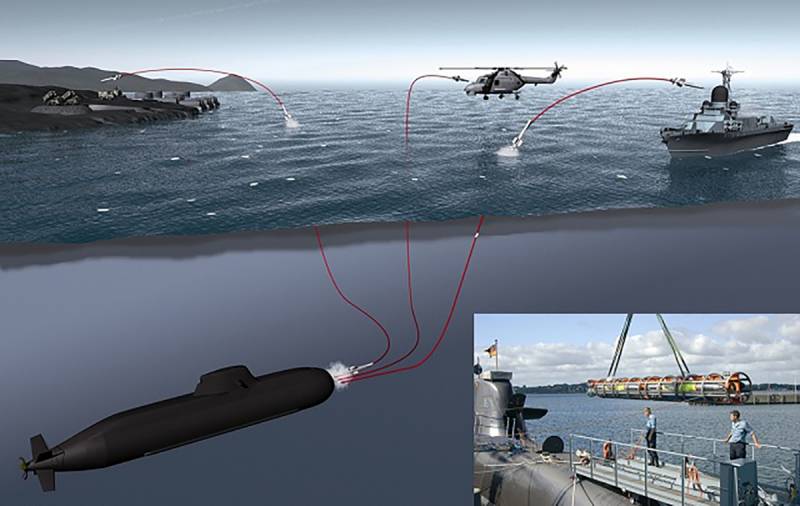
Information